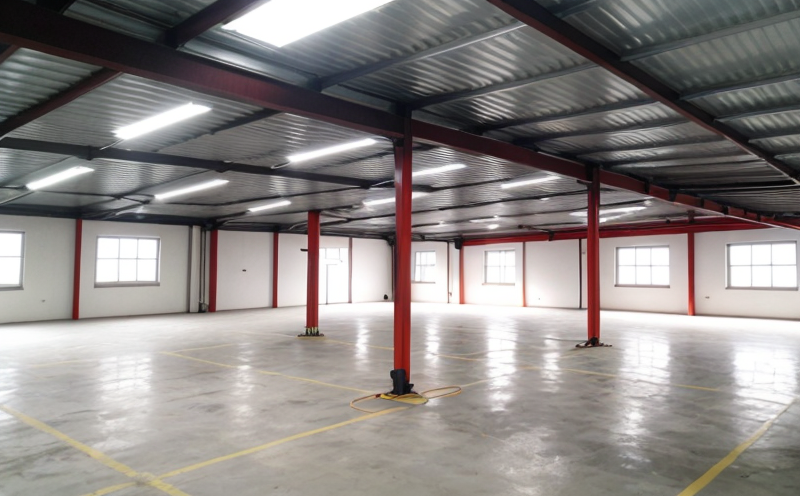Mezzanine floor inspection
In warehouse and storage systems, mezzanine floors play a crucial role in optimizing space usage, enhancing productivity, and improving safety. These elevated platforms provide additional storage capacity without the need for extensive ground-level expansion. However, given their strategic importance, regular inspections are essential to ensure structural integrity and compliance with relevant standards.
Mezzanine floors can be constructed from various materials such as steel, wood, or a combination of both. Each material type has its unique characteristics and implications for inspection procedures. For instance, steel mezzanines require different considerations compared to timber ones due to factors like weight distribution and corrosion resistance. The inspection process must account for these differences to ensure accurate assessments.
The inspection typically involves visual examination, structural integrity checks, load-bearing capacity verification, and compliance with relevant standards such as ISO 19068-2:2015 (Steel structures—General principles of design) or AS 4685.1:2013 (Steelwork for buildings). During the inspection, attention is paid to welds, connections, bolts, and any signs of wear or damage that could indicate potential risks.
Given the critical nature of mezzanine floors within warehouse environments, it's imperative to conduct these inspections at regular intervals. This ensures early detection of issues before they escalate into more significant problems, thereby protecting both personnel and assets. Regular inspections also contribute significantly to maintaining regulatory compliance, which is essential for any organization operating in this sector.
For quality managers responsible for overseeing warehouse operations, mezzanine floor inspections offer a vital opportunity to assess the overall condition of their facilities. By identifying potential weaknesses early on, they can implement necessary corrective actions promptly. Compliance officers will appreciate how adhering to recommended inspection schedules helps avoid costly penalties associated with non-compliance.
R&D engineers involved in designing new storage solutions might find value in understanding current best practices for inspecting existing structures. Such knowledge allows them to incorporate lessons learned into future projects, ensuring safer and more efficient designs. Procurement teams can leverage insights gained from these inspections when specifying materials or selecting contractors for maintenance work.
Regular mezzanine floor inspections contribute not only to operational efficiency but also towards sustainability goals by preventing accidents that could result in environmental contamination. By ensuring structural integrity through timely interventions, organizations demonstrate their commitment to both safety and responsible resource management.
Scope and Methodology
The scope of a mezzanine floor inspection encompasses several key areas: visual assessment, load-bearing capacity evaluation, structural component analysis, and compliance verification. Visual inspections involve examining visible aspects such as surface conditions, paint integrity, and general appearance for signs indicative of deterioration or damage.
- Visual Inspection:
- Load-bearing Capacity Evaluation:
- Structural Component Analysis:
- Compliance Verification:
Loading tests are conducted to determine whether the mezzanine can support specified weights safely. This involves placing progressively heavier loads on different sections of the floor until reaching predetermined limits set forth by relevant standards.
For structural components like beams, columns, and connections, detailed examinations are carried out using non-destructive testing techniques such as ultrasonic flaw detection or magnetic particle inspection. These methods help identify internal defects without causing harm to the structure itself.
The final step in the process involves verifying compliance with applicable standards. This includes checking design calculations against actual measurements taken during the inspection, ensuring that all elements meet specified requirements for strength, stability, and durability.
Why Choose This Test
- Enhanced Safety: Regular inspections ensure that mezzanine floors remain safe for use throughout their lifecycle. Early detection of potential hazards prevents accidents that could result in injuries or fatalities.
- Regulatory Compliance: Adhering to prescribed inspection schedules helps organizations avoid penalties associated with non-compliance, ensuring they meet all necessary legal requirements.
- Economic Benefits: By identifying issues before they become critical problems, inspections save money on extensive repairs or replacements that would otherwise be required if left unattended.
- Informed Decision-Making: The data collected during inspections provides valuable insights into the condition of mezzanine floors. This information supports informed decision-making regarding maintenance schedules and capital expenditure plans.
Regular mezzanine floor inspections offer numerous benefits to warehouse operators, including enhanced safety, regulatory compliance, economic savings, and informed decision-making. These advantages make them an indispensable part of any comprehensive facility management strategy.
Environmental and Sustainability Contributions
The importance of sustainability in modern industrial operations cannot be overstated. Mezzanine floor inspections contribute positively to environmental initiatives by ensuring that structures remain safe and operational for extended periods without compromising safety or efficiency.
By preventing accidents, mezzanine floor inspections help avoid potential damage to stored materials and equipment, reducing the need for costly replacements. This reduces waste generation and promotes resource conservation, aligning with broader sustainability goals.
In addition to direct environmental benefits, regular inspections contribute indirectly by supporting efficient warehouse operations. Efficient facilities consume less energy due to optimized layouts and better utilization of available space. Improved operational efficiency translates into lower carbon footprints across the supply chain.
Warehouse operators committed to sustainable practices recognize the value of incorporating mezzanine floor inspections into their maintenance routines. Through proactive management, these organizations can minimize disruptions caused by unexpected failures while maximizing asset life cycles.





